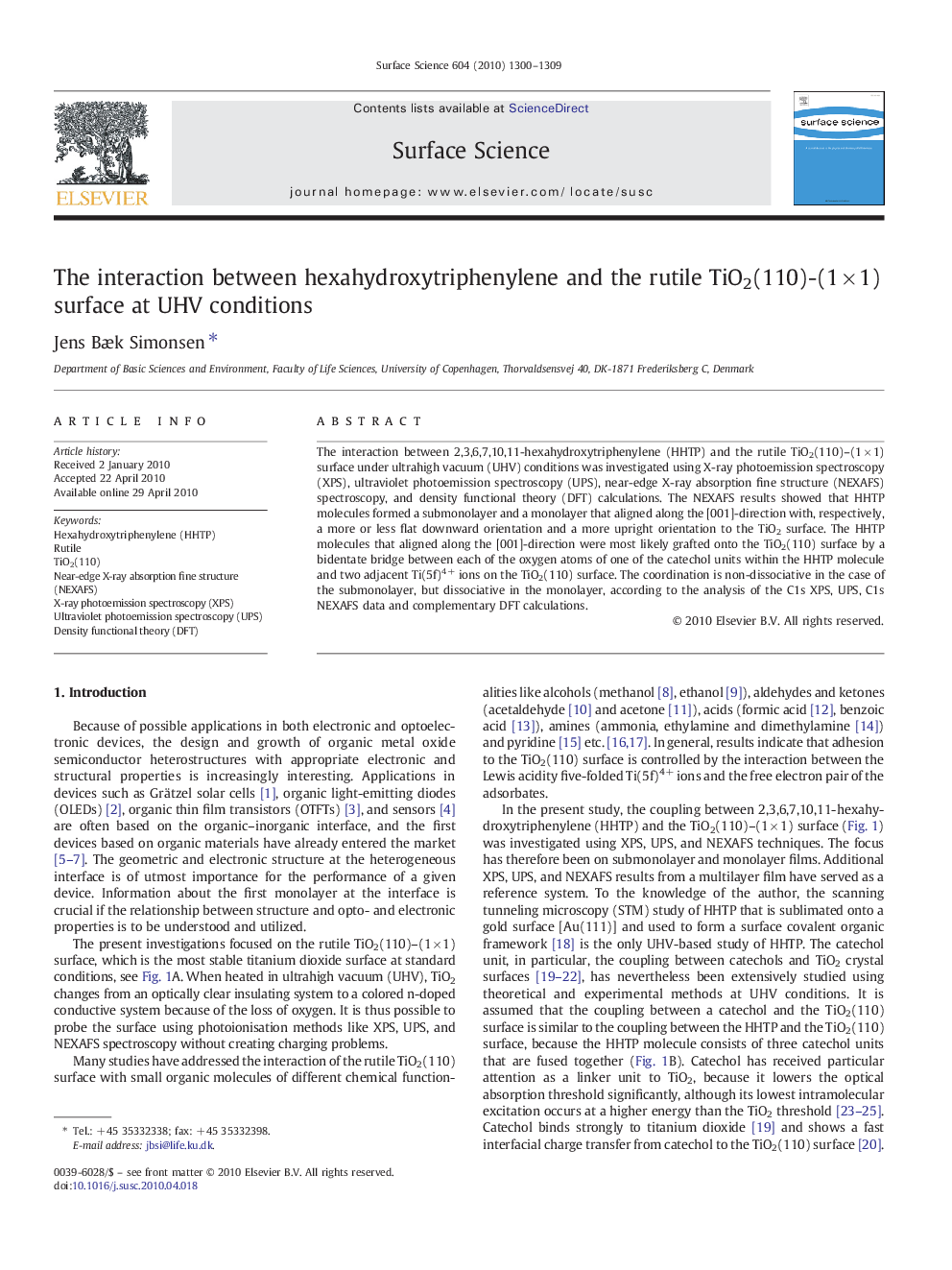| Article ID | Journal | Published Year | Pages | File Type |
|---|---|---|---|---|
| 5423141 | Surface Science | 2010 | 10 Pages |
Abstract
The interaction between 2,3,6,7,10,11-hexahydroxytriphenylene (HHTP) and the rutile TiO2(110)-(1Â ÃÂ 1) surface under ultrahigh vacuum (UHV) conditions was investigated using X-ray photoemission spectroscopy (XPS), ultraviolet photoemission spectroscopy (UPS), near-edge X-ray absorption fine structure (NEXAFS) spectroscopy, and density functional theory (DFT) calculations. The NEXAFS results showed that HHTP molecules formed a submonolayer and a monolayer that aligned along the [001]-direction with, respectively, a more or less flat downward orientation and a more upright orientation to the TiO2 surface. The HHTP molecules that aligned along the [001]-direction were most likely grafted onto the TiO2(110) surface by a bidentate bridge between each of the oxygen atoms of one of the catechol units within the HHTP molecule and two adjacent Ti(5f)4+ ions on the TiO2(110) surface. The coordination is non-dissociative in the case of the submonolayer, but dissociative in the monolayer, according to the analysis of the C1s XPS, UPS, C1s NEXAFS data and complementary DFT calculations.
Keywords
Related Topics
Physical Sciences and Engineering
Chemistry
Physical and Theoretical Chemistry
Authors
Jens Bæk Simonsen,
